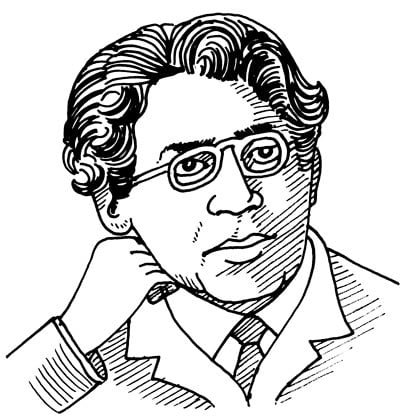
Jagadish Chandra Basu was born in India in 1858. He received his education first in India, until in 1880 he went to England to study medicine. Basu returned to India, taking up a post initially as officiating professor of physics at the Presidency College in Calcutta. Here he converted a small enclosure adjoining a bathroom into a laboratory.
In 1895 Basu gave his first public demonstration of electro-magnetic waves, using them to ring a bell remotely and to explode some gunpowder. The first successful wireless signalling experiment by Marconi was not until May 1897. The 1895 public demonstration by Basu in Calcutta predates all these experiments. By about the end of the 19th century, the interests of Basu turned away from electromagnetic waves to response phenomena in plants. He retired from the Presidency College in 1915, but was appointed Professor Emeritus. Two years later the Basu Institute was founded. Basu was elected a Fellow of the Royal Society in 1920.
Jagdish Chandra began his research work when he was well in his thirties, in the face of callous indifference. Following Hertz’s discovery of electromagnetic waves. Basu became interested in the generation, reception and optical properties of these radiations in the unexplored range from 5 mm to 1 cm, the so-called microwaves. He experimented with the receiving properties of semi-conducting materials and worked on photoconductivity. In 1895 he gave a public lecture in the Town Hall in Calcutta during which he demonstrated for microwave signals across solid walls. This made him famous overnight, and the Benjamin Government sent him on a nine-month tour of Europe.
In December 1896 he repeated his demonstration at the Royal Institution in London before an audience that included Lord Kelvin, one full year before Marconi’s celebrated demonstrations of wireless transmission of radio signals of much longer wavelengths that were commercially exploited. Basu field a patent in USA but let it laps.
Gradually, Basu became absorbed by the similar responses of organic and inert matter to centimetre-wavelength radiation. His poetic and philosophic mind was kindled by ‘the watching of a roadside weed in Calcutta that turned the entire trend of my thought from life’. He devised ingenious instruments to magnify and record extremely small movements in plants. He was one of the first biophysicists. He died in 1937.
